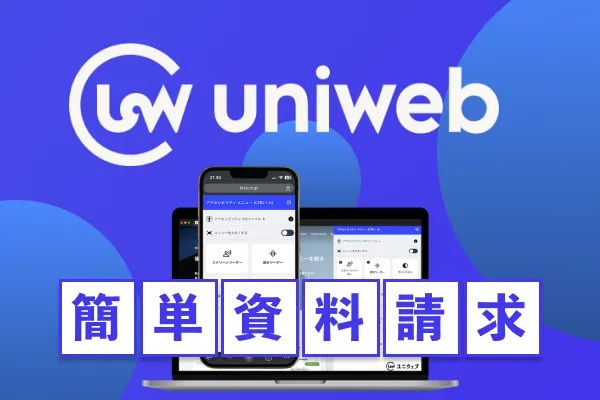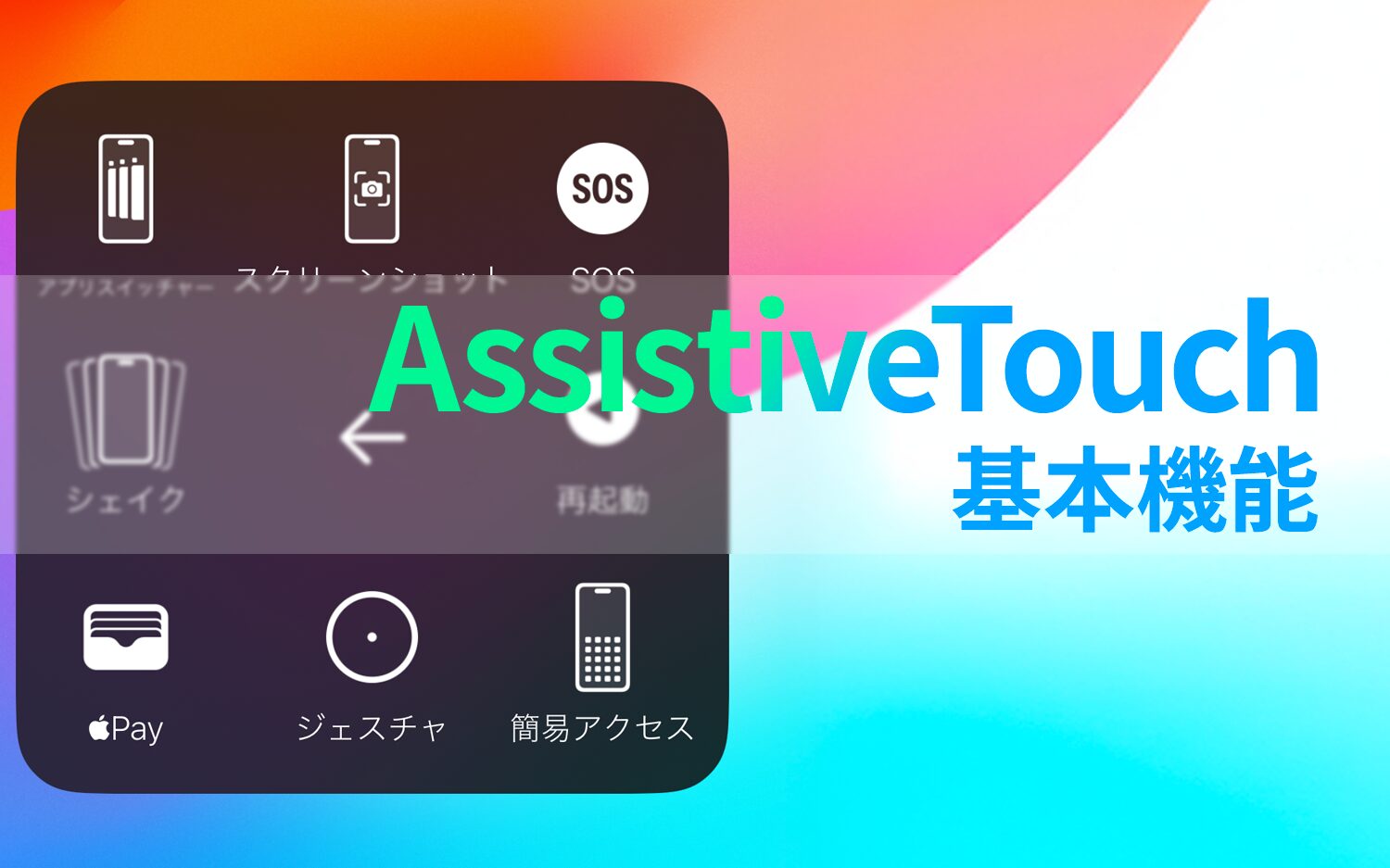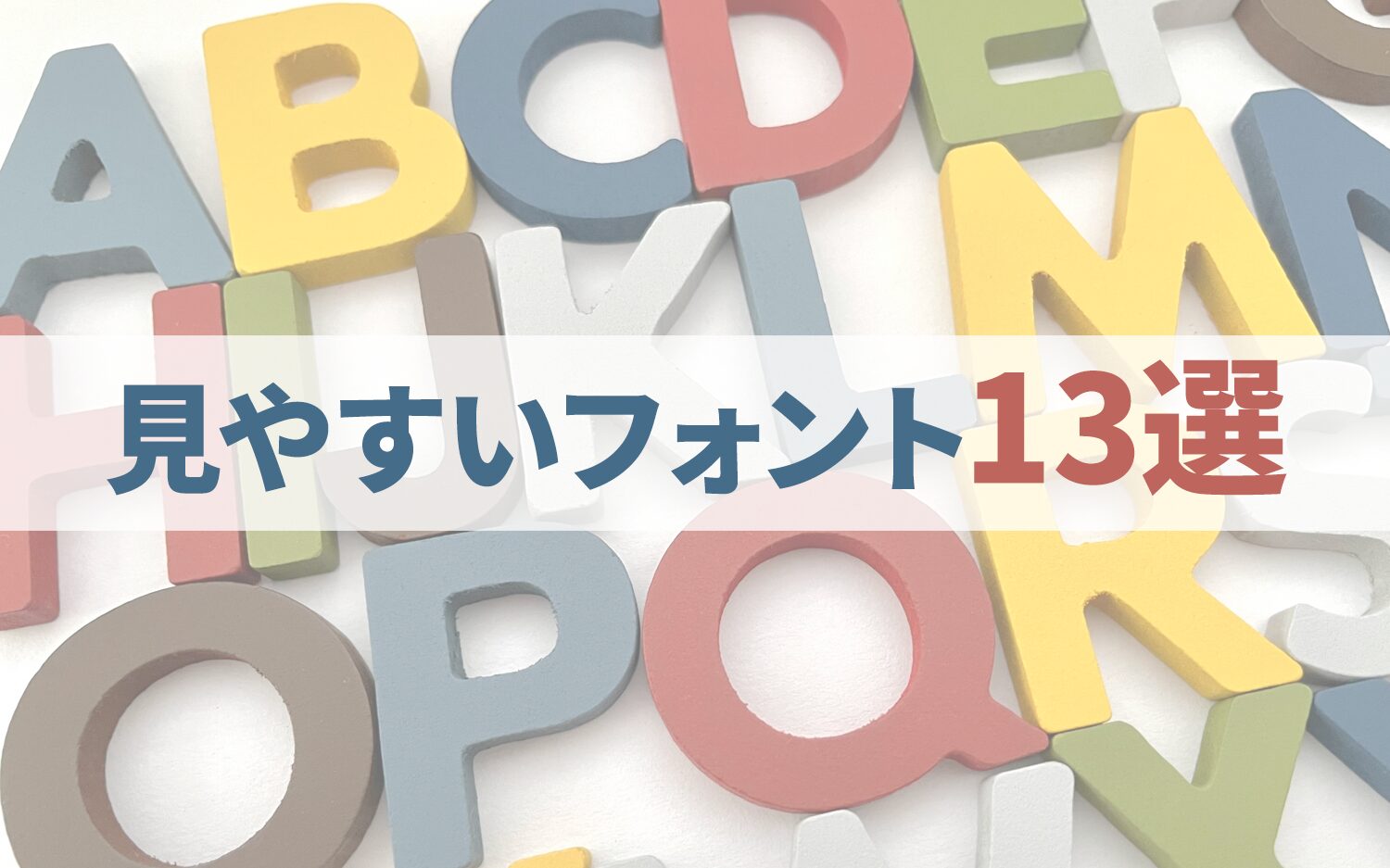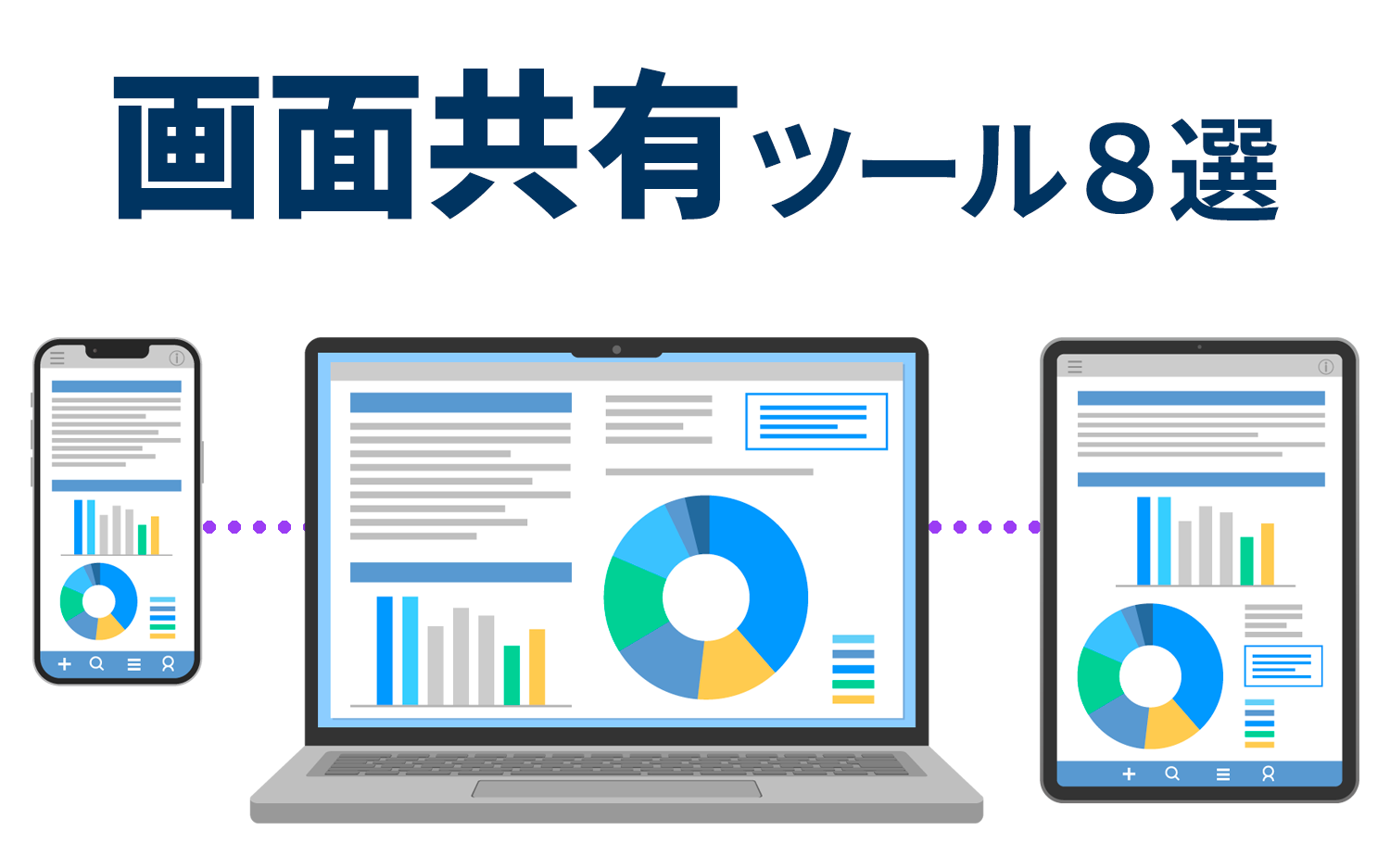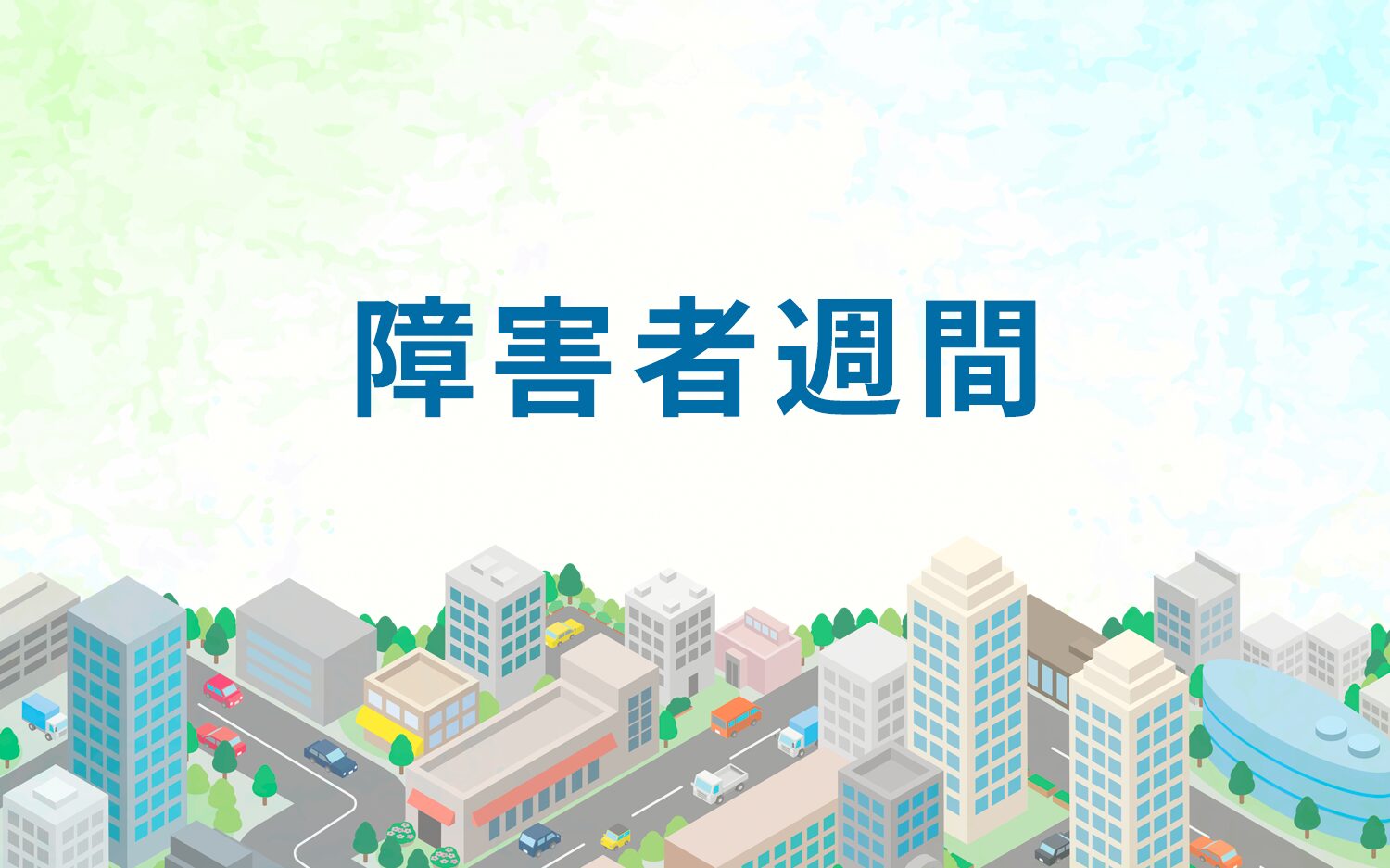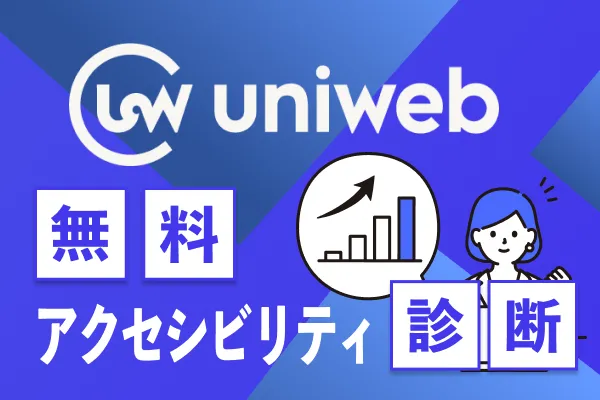Explanation and examples of the "7 principles" for understanding universal design
2025/07/11
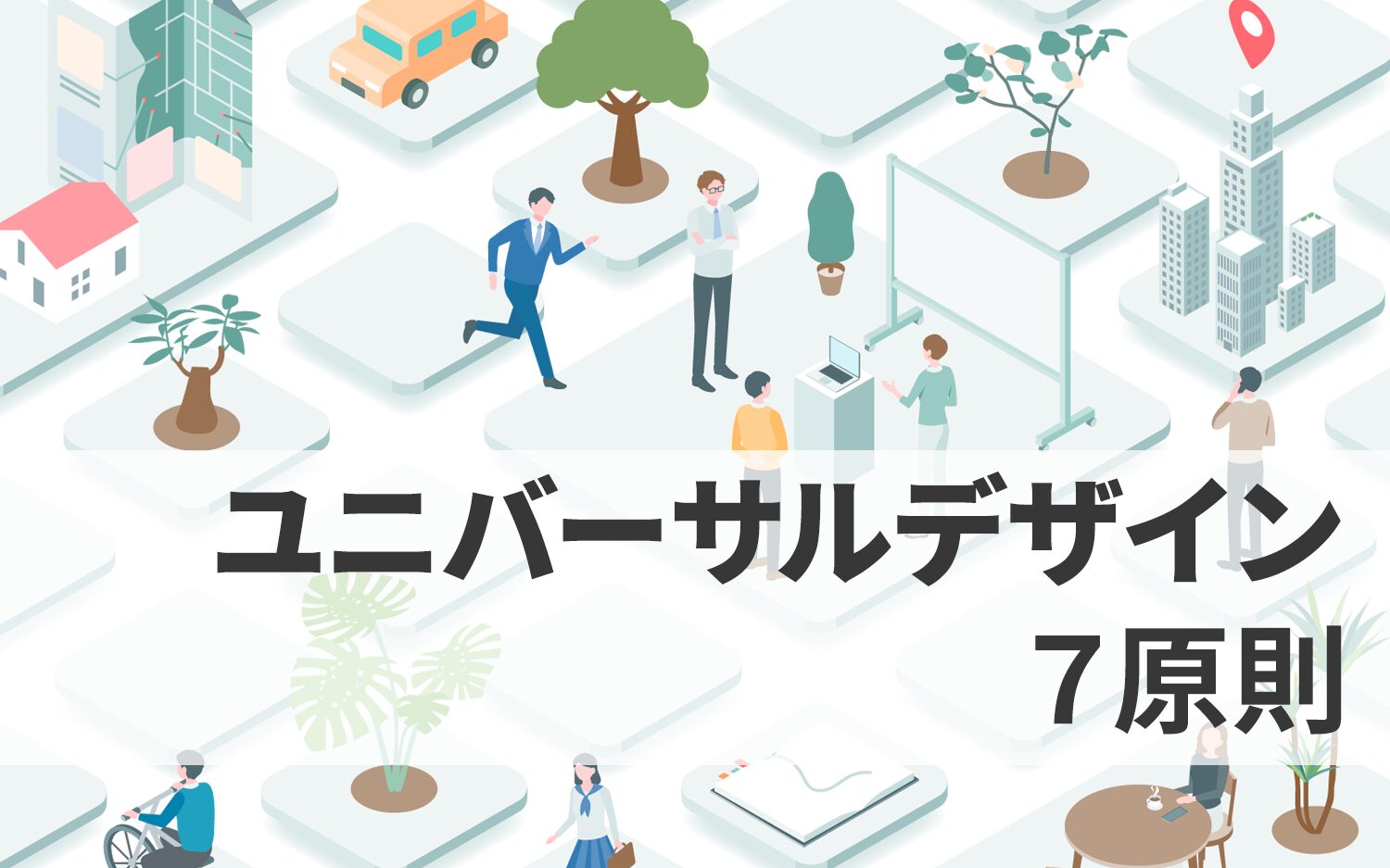
Universal DesignThis refers to the design of products, services, facilities, and media that are,easy to understand and use by all people, regardless of disability, age, gender, or cultural differences.Refers to.
Basic Guidelines for Design Using Universal DesignAre as follows:Seven Principlesare established.
Principle 2: There should be flexibility in use.
Principle 3: Simple and Intuitive Use
Principle 4: Perceptible Information
Principle 5: Safety from Misuse
Principle 6: Low physical burden.
Principle 7: Accessible space is ensured.
By applying these principles in corporate product development and municipal urban planning, products and environments become easier to use for more people, leading toImproving overall societal accessibility.This leads to.
This article will explain the seven principles of universal design and introduce examples of universal design found in our surroundings.
Table of Contents
- 1 Purpose of Universal Design
- 2 Seven Principles of Universal Design
- 2.1 Principle 1: Equitable Use
- 2.2 Principle 2: Flexibility in Use
- 2.3 Principle 3: Simple and Intuitive Use
- 2.4 Principle 4: Perceptible Information
- 2.5 Principle 5: Safety against erroneous operations is ensured (Tolerance for Error).
- 2.6 Principle 6: Low Physical Effort
- 2.7 Principle 7: Size and Space for Approach and Use
- 3 Universal Design Around Us
- 4 Universal Design Initiatives in Local Governments
- 5 Six Points of Universal Design on Websites
- 6 Differences between Universal Design and Barrier-Free Design
- 7 Conclusion
Purpose of Universal Design
Universal Design is a concept proposed by Ronald Mace (1941-1998), a professor and architect at the University of North Carolina, and'Universal design is the design of products, environments, programs, and services that can be used by all people, to the greatest extent possible, regardless of their age, ability, or circumstance.'It is defined as.
This means thatThe basic definition of universal design is that design should not be something special for anyone, but something that functions as 'normal.'This is the strategy of corporate communication.
In various products and services, the specific purposes for incorporating universal design can be summarized as follows: five key points.
Concrete Objectives for Implementing Universal Design
2. Ensuring Fairness:By providing environments that are equally accessible to all people, not just specific groups, it promotes social equity.
3. Promoting Social Inclusion:Promoting social inclusion by enabling diverse individuals with different needs to coexist in the same space.
4. Reducing Operational Costs:By eliminating the need for special modifications or renovations, it can lead to cost reductions in the long term.
5. Respecting Cultural Diversity:To ensure that people with different cultural and linguistic backgrounds can use the same products and services by respecting cultural diversity.
In this way,the purpose of universal design is to design products, environments, and services that can be equally utilized by all people, regardless of age, gender, disability, language, or cultural background.This aims to enhance the convenience and comfort of society as a whole and strive for a more inclusive society.
Seven Principles of Universal Design
As introduced in the previous section, Ronald Mace and his colleagues proposed universal design and summarized seven principles as guidelines for that design. Each will be explained in detail.
Principle 1: Equitable Use
Can be used in the same way by everyone.designed as such.Does not create advantages or disadvantages for specific users.It is important to ensure this.
◆ Key Points
- Everyone can use it in the same way.
- Everyone's privacy and safety can be ensured.
- No disadvantages or restrictions are created for specific users, nor do they feel a sense of discrimination or humiliation.
Principle 2: Flexibility in Use
Able to accommodate a wide range of individual preferences and abilities.This is to offer design. For example,To allow people with different skill levels, such as right-handed or left-handed, to use the same products and services.It is essential to be conscious of this.
◆ Key Points
- The ability to choose various methods of use and operation.
- It must be able to accommodate users' handedness and physical characteristics.
- Can be used according to the user's pace and preferences.
Principle 3: Simple and Intuitive Use
Regardless of users' experience, knowledge, language ability, or concentration,The use must be easy to understand.designed as such.The method of operation should be simple and intuitive.This is crucial.
◆ Key Points
- The usage must be easy to understand and not unnecessarily complicated.
- It must meet users' expectations and intuitions.
- Users should be able to obtain necessary information at the right time.
- Using terms and expressions that are easy for everyone to understand.
Principle 4: Perceptible Information
Regardless of the user's situation, visual or hearing abilities,Designed to effectively communicate necessary information.This is important. Information must be presented in various forms, such as text, visual symbols, and audio guidance.Information must be provided through different senses.This is required.
◆ Key Points
- Conveying information through different senses, such as sight, hearing, and touch.
- Adjusting the size and contrast of text and symbols to ensure visibility and clarity.
- Information must be clearly organized for easy differentiation, with important information emphasized.
Principle 5: Safety against erroneous operations is ensured (Tolerance for Error).
Although it is assumed that the design minimizes the likelihood of erroneous operations,Safety designs that prevent major issues even in case of misuse are vital.It is important to adopt mechanisms that minimize failures.
◆ Key Points
- Design should aim to eliminate, isolate, or cover dangerous parts to prevent misuse.
- Warnings should be issued in case of misuse or dangerous actions.
- A system should be in place so that any misuse can be easily rectified.
Principle 6: Low Physical Effort
Users canCan be used comfortably without strain.designed as such.Users should be able to operate without unnecessary exertion and not feel fatigued even with long-term use.are required.
◆ Key Points
- Use it in a natural posture.
- It should be usable without unnecessary exertion.
- Designed to ensure minimal fatigue during prolonged use.
Principle 7: Size and Space for Approach and Use
Regardless of physical build or posture,Access to necessary equipment and facilities should be achievable without strain.This is to ensure that users can access and use.Ensuring adequate width and size.This is crucial.
◆ Key Points
- There should be spaces that can be accessed comfortably whether sitting or standing.
- There should be no obstacles in access routes for easy movement.
- Targets should be in visible and easily reachable positions.
These seven principles are fundamental concepts for practicing universal design, ensuring thata wide range of users can use products and services safely and effectively.Functions as such.
Universal Design Around Us
Many products, services, and facilities incorporating universal design can be found around us. Here are some examples of universal design that are often seen in daily life.
※ All photos are taken by the author.
Universal Design in the City
◆ Automatic Door (Left) and Long-handled Door (Right)
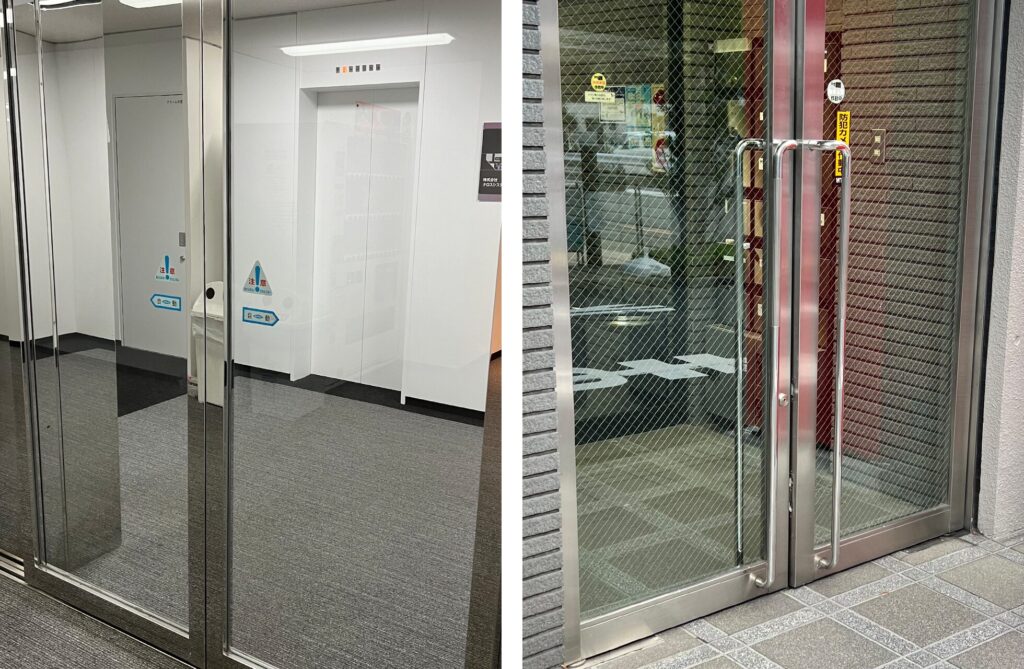
Automatic doors are one of the most commonly seen products of universal design. The sensors come in various types, including infrared, ultrasonic, touch, and weight sensors. Also,Doors with long handles can be easily opened and closed by children and shorter individuals.
◆ Braille blocks on sidewalks
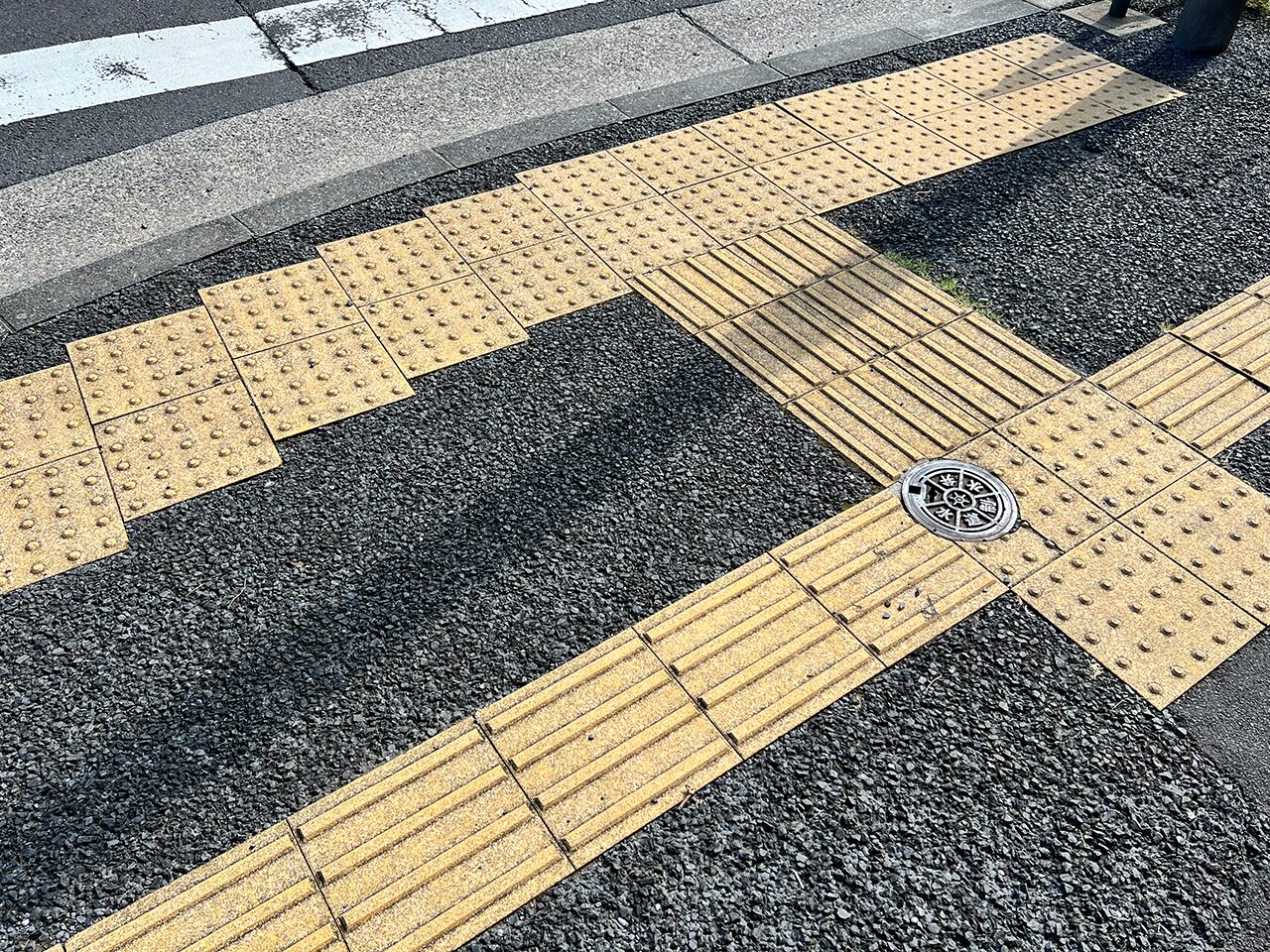
Braille blocks are also a common feature of universal design. Those with vertical lines are called 'warning blocks' or 'dot blocks.'Blocks that indicate the direction of movementThose known as 'guidance blocks' or 'linear blocks', where dots are arranged,Blocks indicating the location of hazardous areas and guidance facilities.These are referred to as 'warning blocks' and 'dot blocks.'
◆ Stair railings
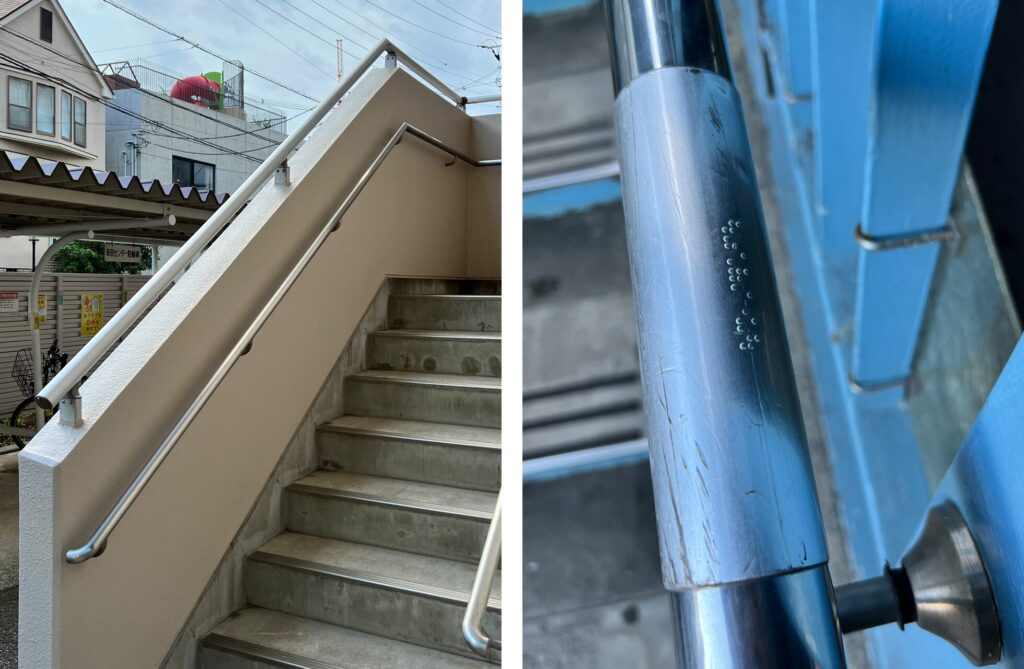
Handrails for stairsBy varying the height and installing multiple handrails, both adults and children can use them to ascend and descend.Additionally, many pedestrian bridges and stair railings at train stations have braille, allowing individuals with visual impairments to understand their destination and current location.
◆ Wheelchair Ramps
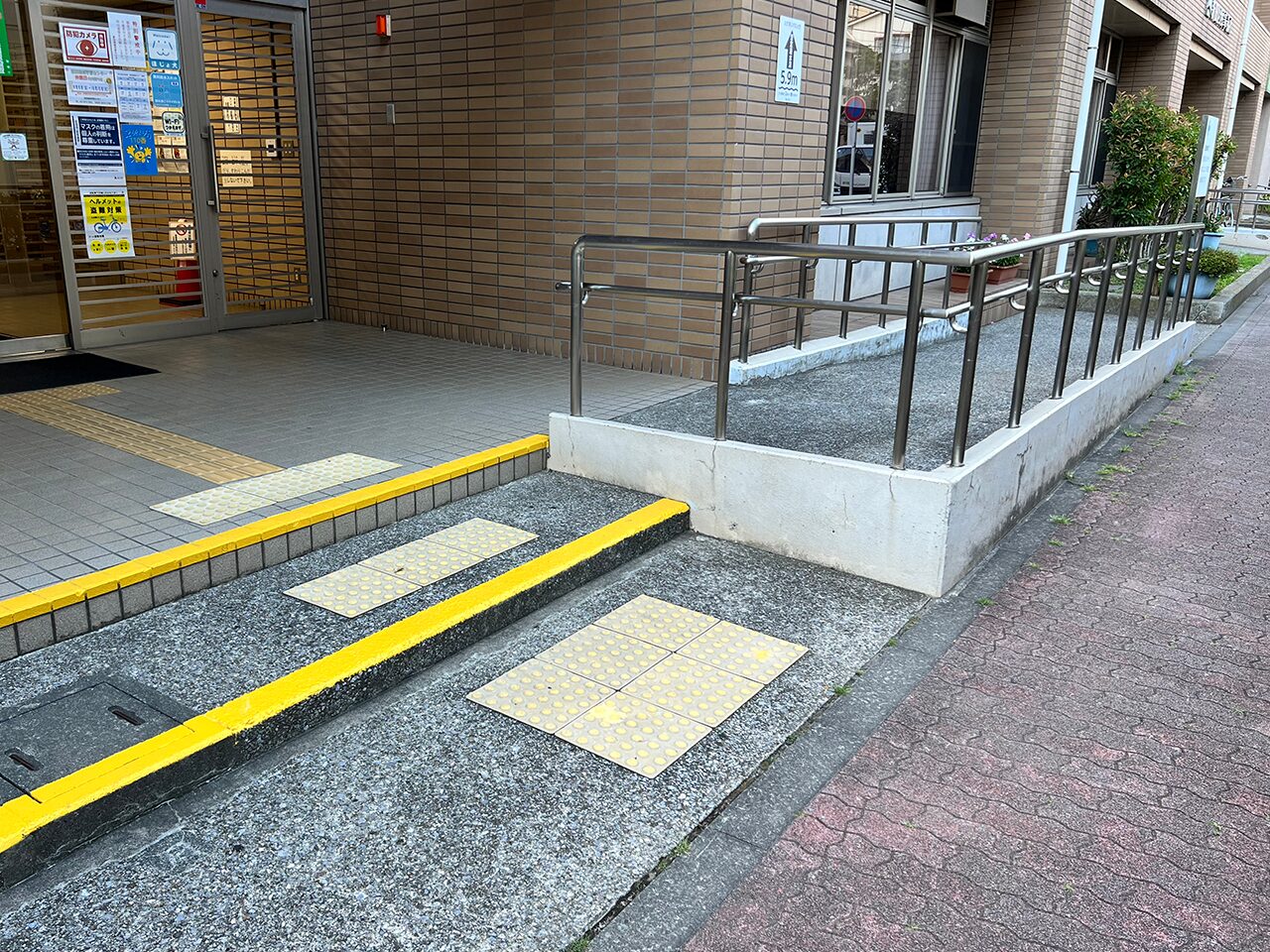
Entrances of facilities are equipped with wheelchair ramps alongside stairs. Notably, the steps or stairs are often marked with yellow lines to indicate the presence of height differences.This is added for all people, including those with visual impairments, to recognize the presence of height differences.This is also a design based on universal design.
◆ Guidance through Pictograms
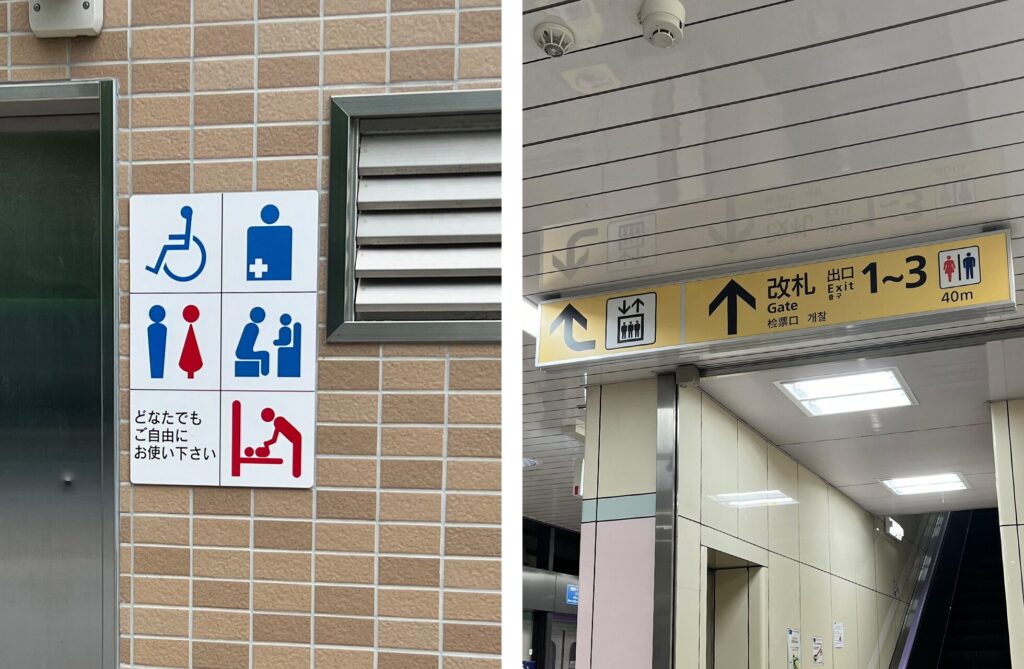
The left shows a guide sign for park toilets indicating who can use them.Intuitive judgments can be made through pictograms.Additionally, the right shows guidance signage within a station, which clearly indicates directions to destinations using pictograms and arrows, as well as exit numbers.The information is also emphasized.
◆ Rubber Chip Pavement in Parks
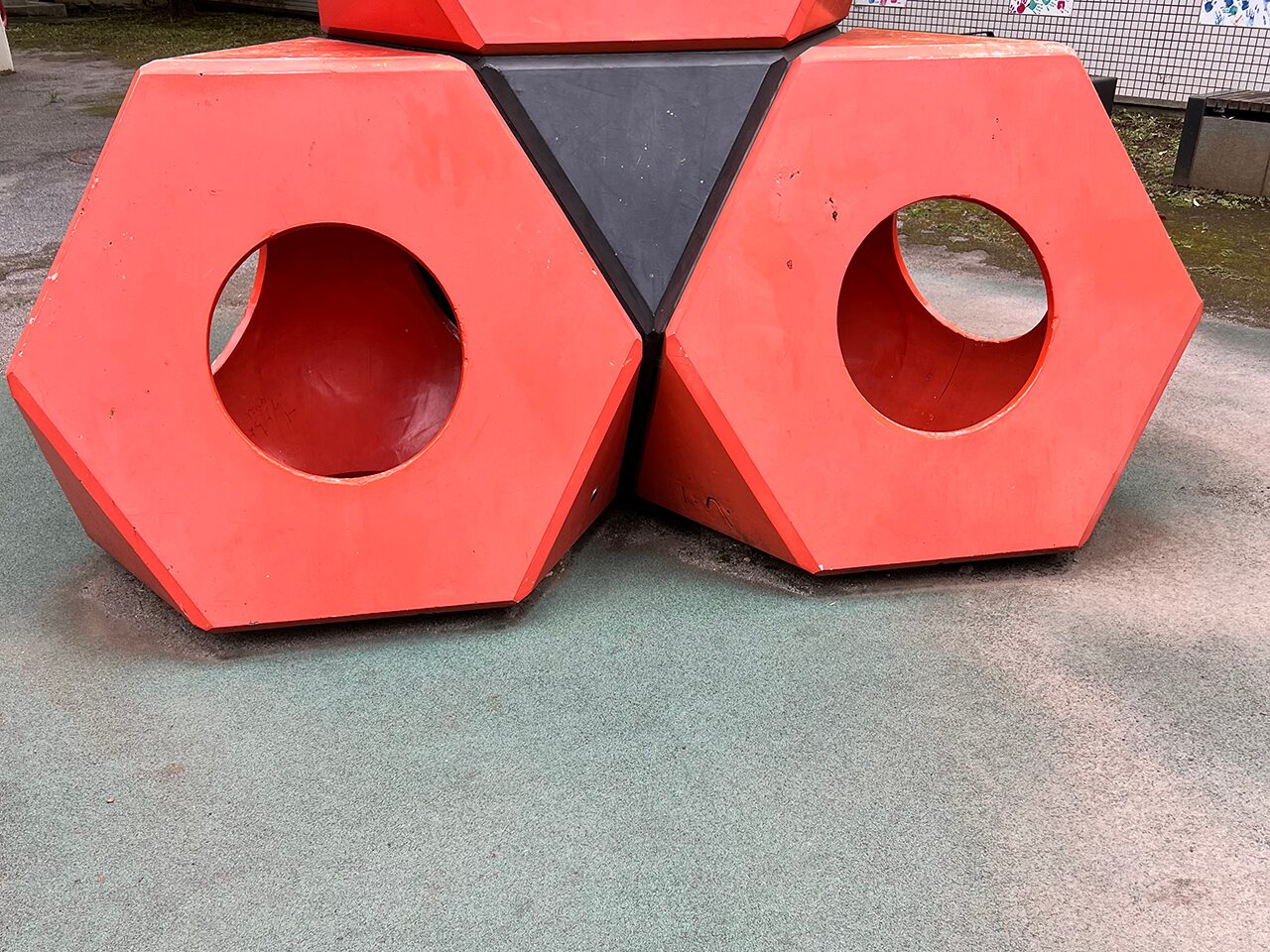
In recent years,'Inclusive Parks' designed around universal design have been increasing.Designed to accommodate children with disabilities, various considerations have been taken. As seen in the above photo,The ground around play equipment is paved with rubber chips to reduce the risk of injury.This is one of those considerations.
◆ Wide Ticket Gates
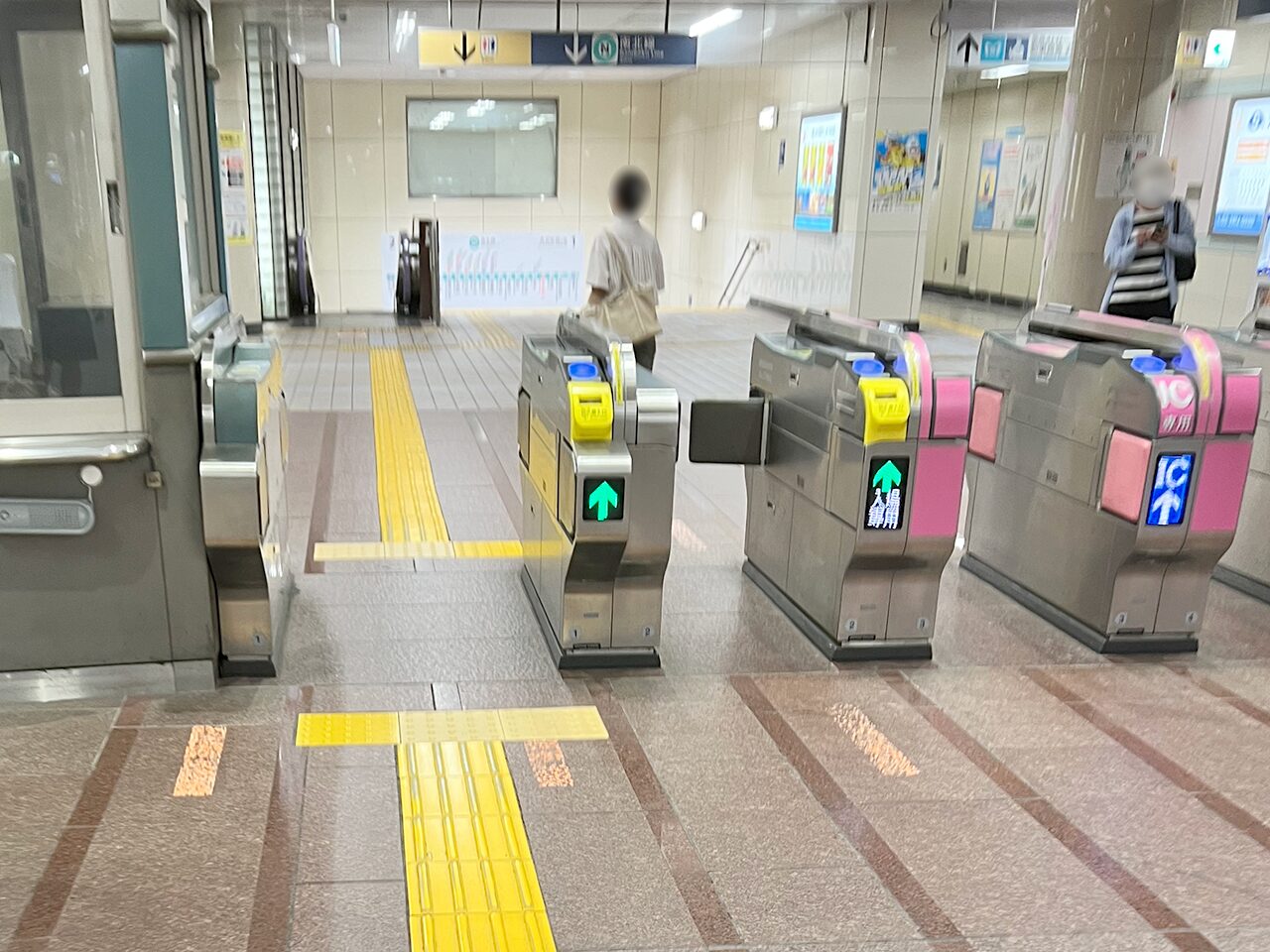
At train gates, wider gates are provided for users of wheelchairs, crutches, walking aids, and those carrying large luggage or using strollers.
◆ Accessible Parking Spaces
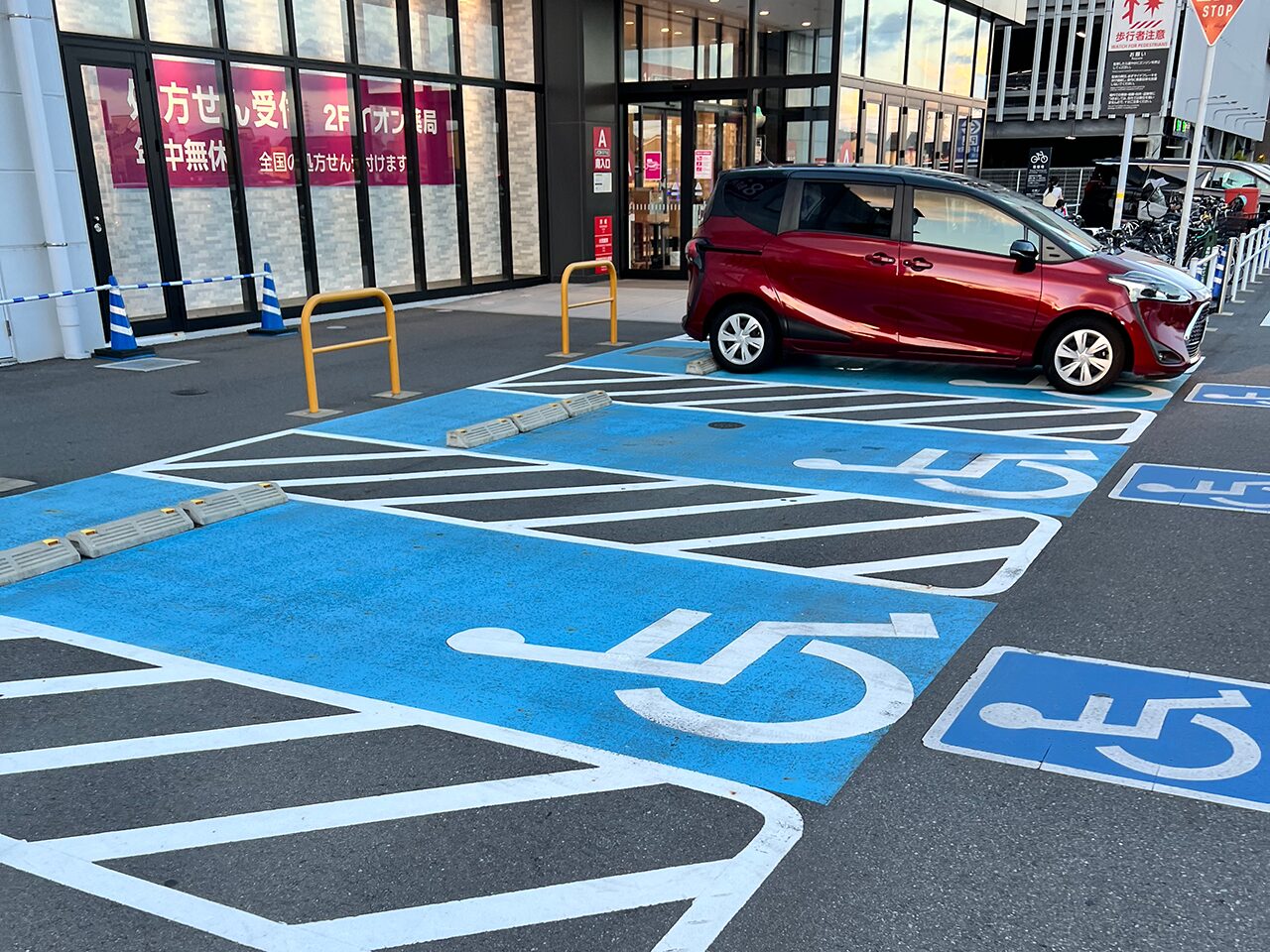
Parking lots of public facilities and large commercial spaces are equipped with accessible parking spaces.Ample space is provided for wheelchair users and their assistants to board and alight without stress.These spaces are usually placed near facility entrances.
Indoor Universal Design
◆ Multi-functional toilets
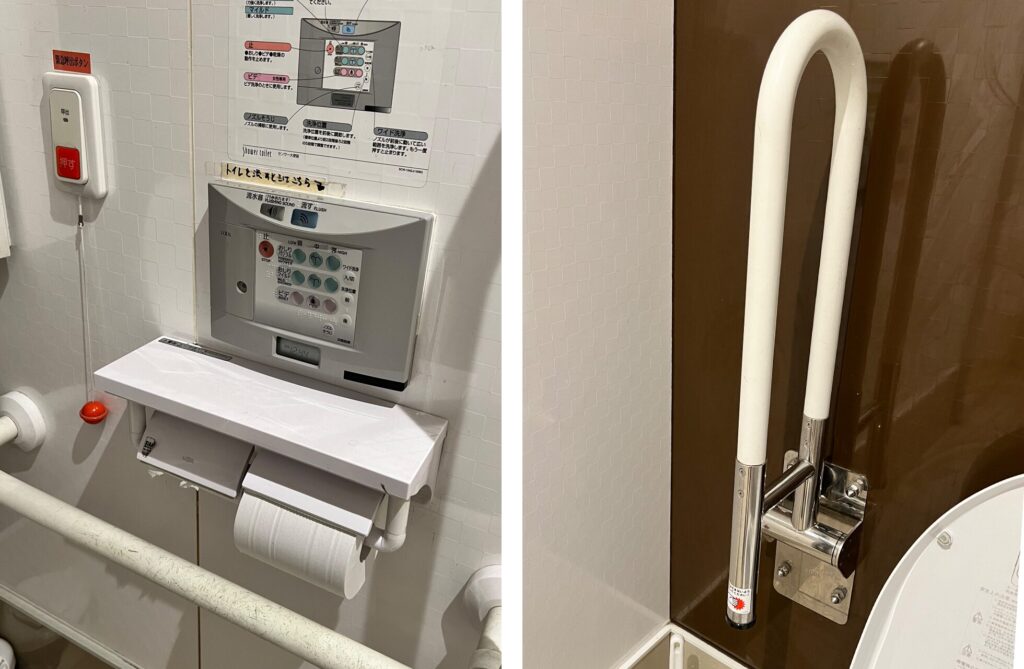
Multi-functional toilets feature call buttons, handrails, and automatically opening and closing toilet lids. Wash buttons and shower controlsare consolidated in one location for easy access at hand.They are designed for ease of use.
Some toilets are designed to automatically flow water, or simply flowing water by waving a hand, and various innovations continue to emerge around toilets.
◆ Touchless Faucets
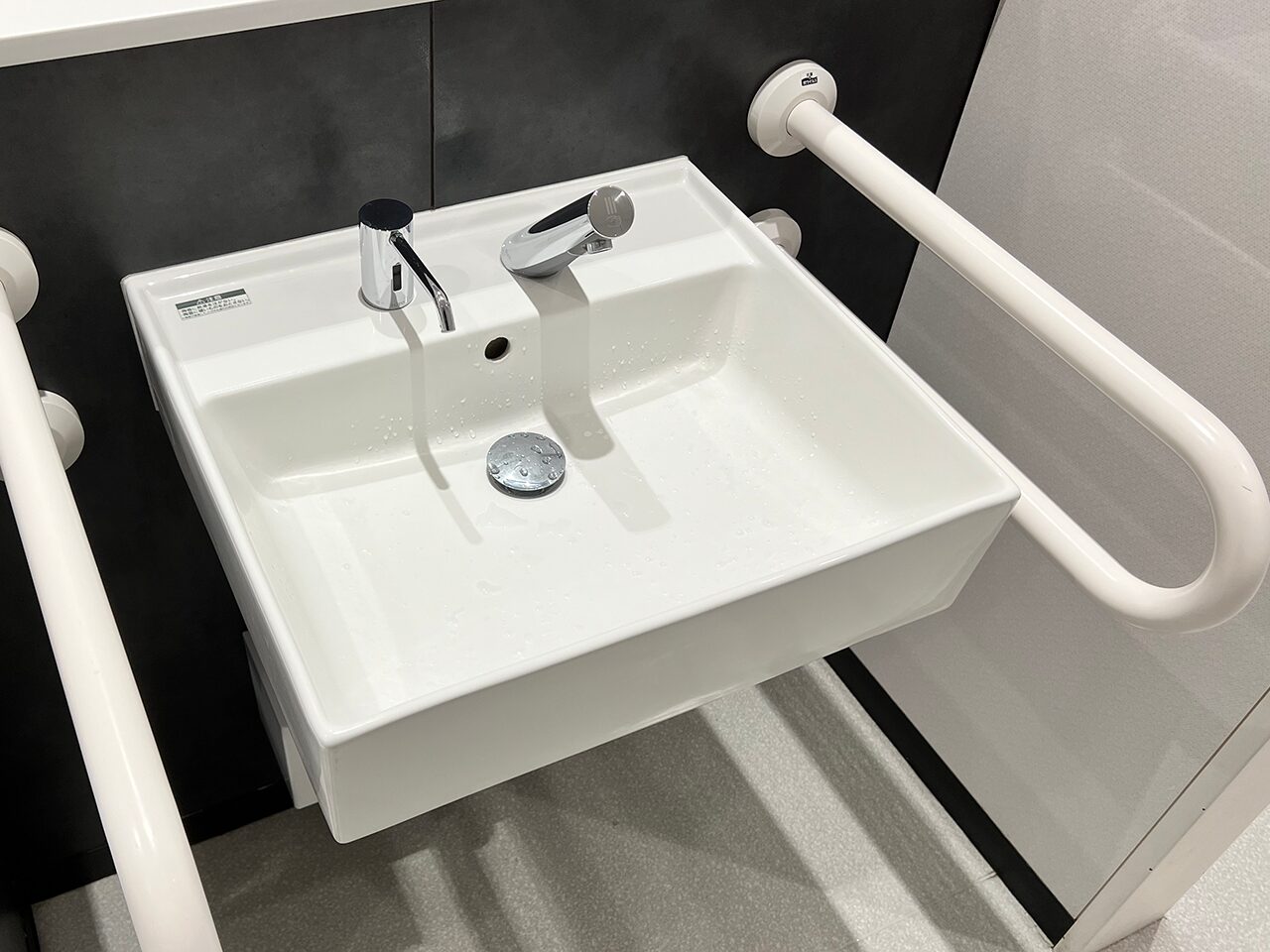
Touchless faucets at wash basins allow water to flow with just a hand gesture and automatically stop after a certain time. As there is no need to touch the faucet,this makes it a hygienic solution that all users can utilize comfortably.It is a facility.
◆ Wheelchair-Compatible Elevators
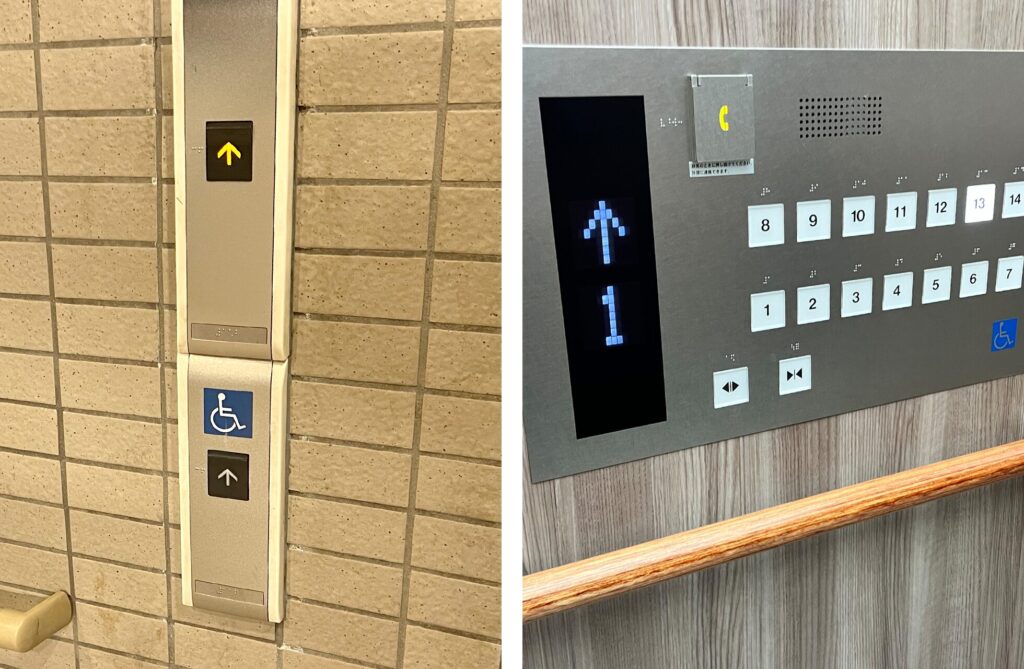
Elevators that can be comfortably used by wheelchair users areElevators are equipped with wheelchair-specific buttons installed at low positions inside and outside, allowing for longer door opening time and slower operation.Additionally, mirrors installed in the front are for rear visibility.
◆ Large Light Switches
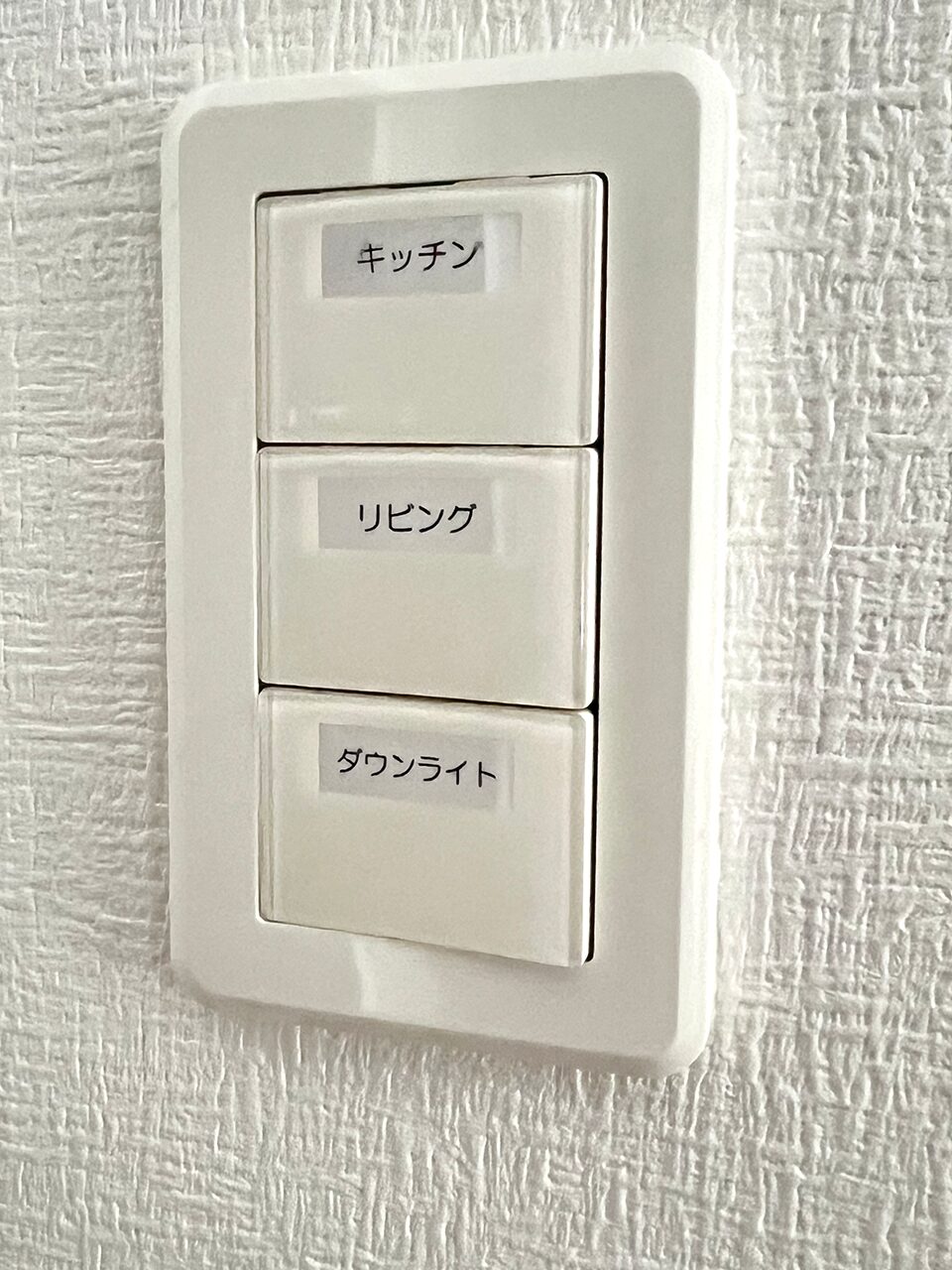
Light switches that toggle ON/OFF with each press are designed to be large, allowing users to push them with the palm of their hand even if they cannot move their fingers easily, and they can also use their elbow or shoulder when holding items.
◆ Protrusions on Shampoo Bottles

The sides of shampoo bottles and the tops of pumps often have evenly spaced protrusionsdesigned to help visually impaired individuals distinguish between shampoos.This design is provided for their convenience.
Since its practical application in 1991, this design has been advocated for adoption by industry members and is now utilized across many bottles regardless of manufacturer.
◆ Banknote Identification Marks
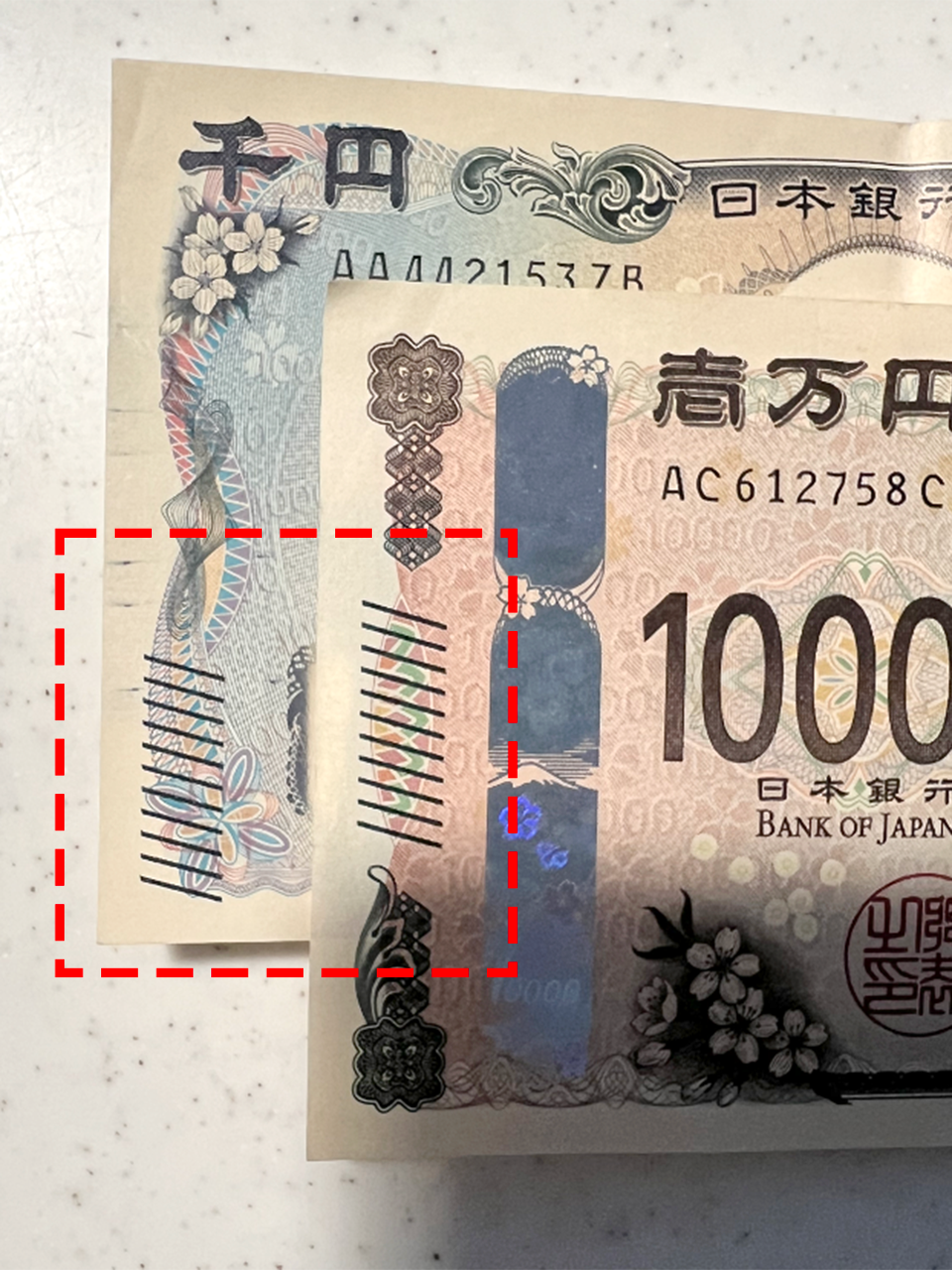
Universal design is also incorporated into banknotes. In the new banknotes issued in 2024,identification marks (11 diagonal lines) that can be felt by touch are included,and the positions of these marks vary by denomination to aid in identification.
Additionally, techniques like varying the shape and placement of holograms and cutouts by denomination have been employed to facilitate identification.
Universal Design Initiatives in Local Governments
The concept of universal design is also being actively introduced in public facilities and services, and here we introduce some examples of municipalities that are taking advanced approaches in different areas such as transportation, information dissemination, and urban infrastructure.
Fukuoka City: Support for introduction of universal design cabs
Fukuoka City aims to create a city where everyone can move around safely,Support subsidy program for the introduction of "Universal Design Taxis" (UD Taxis)is being implemented.
This UD cab is,Wide boarding ramp and spacious wheelchair-accessible interiorIt features user-friendly designs such as
To be eligible for assistance,Vehicles that are compatible with smart phone dispatch and cashless payment and display the "Universal City of Fukuoka" logo.includes.
It is expected to be a comfortable means of transportation for all, including the elderly and people with disabilities, as well as families raising children and tourists.
Citation: Subsidy for introduction of universal design cabs (Fukuoka City Website)
Tokyo Metropolitan Government: Formulation of guidelines specific to visual information
In March 2025, the Tokyo Metropolitan Government will revise the "Tokyo Universal Design Guidelines" issued in 2011,TOKYO Universal Design Guidelines (Visual Information Version) - Aiming for easy-to-understand colors and design that everyone can easily see and understand.presented.
In this revision,Information design that takes into account various differences in vision, such as cataracts, glaucoma, and low vision, in addition to color weakness, and the use of letters, symbols, diagrams, and pictograms in addition to color schemesThe new system includes new innovations such as the following.
In addition,The target population has been expanded to include the elderly, developmentally disabled, intellectually disabled, hearing impaired, foreign nationals, and children.The new product is expected to be used as a practical reference material in a variety of information media, including printed matter, websites, and signs.
Hiroshima City: An Advanced Example of UD in Stadium Development
In Hiroshima City, various universal design features are being incorporated in the EDION Peace Wing Hiroshima soccer stadium, which opens in 2024.The stadium has been recognized as worthy of the Minister of Land, Infrastructure, Transport and Tourism award and has attracted national attention.
Particularly appreciated are,Permanent sensory room and calming down space for children with developmental disabilities and other sensory sensitivities and their families, spectator seating with power outlets for wheelchair users, and magnetic loops (hearing assistance) for the hearing impairedSuch as.
Furthermore,These designs utilize workshops co-created with citizens and people with disabilities.The measures are embodied from the user's perspective.
This is a good example of the progress being made in creating a safe and enjoyable environment for all, even in a large space such as a sports facility.
Six Points of Universal Design on Websites
So far, we have introduced universal design in facilities and products, but universal design should also be actively incorporated into websites.Universal design on websites refers to designing websites so that every user can access them, regardless of age, disability, technical skills, or devices used.This is what is meant.
In the context of web universal design, the following six points are critical.
◆ Six Key Points of Web Universal Design
2. Ensuring Usability
3. Compatibility with Various Devices
4. Error Recovery Support
5. Consideration for Language and Culture
⑥ Providing user support
We will explain each point.
① Ensuring accessibility
Accessibility on the web means thatall people can obtain the same information equally, regardless of whether they have disabilities.It is.
Concrete methods to ensure web accessibility include using appropriate HTML tags so that screen readers for visually impaired people can accurately read the text, and ensuring sufficient color contrast to enhance content visibility for those with visual limitations.
Additionally, visual elements like images and videos should always have alternative text (alt attributes and captions) to ensure that visually impaired individuals can also understand the content.
With the amendment of the Disability Discrimination Mitigation Act,Starting in April 2024, providing reasonable accommodations for web accessibility will become mandatory.As a result, all companies are required to ensure web accessibility for their own sites.
A separate article provides a detailed overview of web accessibility.it is essential for businesses and personnel managing websites to read this carefully.
Related Articles:What web accessibility measures must site managers implement?
2. Ensuring Usability
Usability refers to the 'ease of use.' The basics for ensuring web usability are toEnsuring consistency in design, standardizing layout and operation methods across pages to avoid confusing users.ensure the site's navigation is intuitive and easy to understand so that users can easily access their desired content.
Additionally, forms for inquiries or material requests should be kept simple, with clear labels for 'Name,' 'Address,' 'Gender,' etc., and options should be selected wherever possible.Designed for smooth input.This is important.
3. Compatibility with Various Devices
Build the website using responsive design so that it displays properly not only on PCs but also on smartphones and tablets.It should be accessible and usable on various devices such as smartphones and tablets.Additionally, it is crucial to ensure compatibility regardless of device or internet connection speed.Ensuring that websites load quickly.This is also important.
4. Error Recovery Support
If users make mistakes while filling out forms,Error messages are clearly displayed and can be easily corrected.an error recovery mechanism should be in place. Furthermore, when users perform important actions such as 'Delete' or 'Submit',display a confirmation dialog to prevent accidental actions.Such measures are required to prevent accidental misuse.
5. Consideration for Diverse Languages and Cultures
If possible, provide content in multiple languages to ensure usability for speakers of different languages. This too requires effort, butit is important that images and text are culturally appropriate across different cultural contexts.It is preferable to verify this and ensure that there is no discomfort for international users.
⑥ Providing user support
Providing help pages or FAQs to enable users to understand how to use the site is also essential.Help Pages and FAQsIn addition, clearly list contact information so that users can easily reach support if issues arise, ensuring that users in various situations can inquire.Prepare multiple inquiry methods (phone, email, chat, etc.).This is crucial.
By considering these points, websites can be made user-friendly and accessible for all users. By incorporating universal design into websites,Not only does it improve user satisfaction, but it also reduces legal risks and allows for reaching a broader user demographic.。
Utilize 'UniWeb' for Implementing Universal Design on Websites
Today, websites are owned by companies in all industries, and it is often the case that companies begin incorporating universal design on their own sites first. However,building or remodeling a website is relatively easy to start but does come with both financial and time costs.。
If you are considering incorporating universal design into your company's website, please refer to our‘UniWeb’Consider utilizing 'UniWeb.' UniWeb is aplugin-based tool that allows easy implementation of many features to improve the accessibility of all websites..
This includes various functionalities explained in '1. Ensuring Accessibility' of the six points discussed in this chapter.Features such as screen reader compatibility and contrast adjustment can be implemented by simply inserting one line of code into the website.This allows for the initiation of universal design for websites with cost efficiency in a short timeframe.
Click the blue person icon in the bottom right of this articleIf you do so, you will be able to experience the functions of UniWeb, so please give it a try.
Differences between Universal Design and Barrier-Free Design
Many people might find the differences between universal design and barrier-free design unclear. According to the Ministry of Internal Affairs and Communications, both are explained as follows in the Basic Plan for Persons with Disabilities.
◆ Definitions of barrier-free and universal design in the Basic Plan for Persons with Disabilities
'Barrier-Free'
The term 'barrier-free' originally emerged in residential construction terminology, meaning to remove barriers that hinder social participation for people with disabilities, typically referring to the elimination of physical barriers like steps. However, it refers more broadly tothe removal of all social, institutional, and psychological barriers hindering participation by people with disabilities.This term is also used in that context.
'Universal Design'
Barrier-free design addresses barriers (obstacles) posed by disabilities, whereas universal design isDesigning urban and living environments in advance so that they are accessible to diverse people regardless of the presence or absence of disabilities, age, gender, race, etc.The idea of universal design.
Citation: Barrier-free and universal design (Ministry of Internal Affairs and Communications)
The primary difference between universal design and barrier-free design is the target audience.It is. Universal design includes everyone from children to the elderly, from able-bodied individuals to those with disabilities, as well as people with different languages and cultures.Universal design is targeted at all individuals.In contrast, barrier-free design primarily focuses on individuals with specific constraints, such as people with disabilities and the elderly.
Additionally, universal design aims to design products and environments that are accessible to everyone, taking into accountdiverse users from the outset in the design process.This is the goal.
On the other hand, barrier-free design primarily aims at removing physical and psychological barriers faced mainly by the elderly and disabled individuals, thus fundamentallyfocuses on remediating or adapting existing environments to eliminate these barriers.This is a core focus.
Conclusion
Until now, products, services, and facilities have been developed primarily for able-bodied individuals. However, as society calls for diversity,in modern society, where barriers based on physical attributes, age, gender, nationality, and culture have been broken down, universal design should ensure that all people can accessand has penetrated various fields.
Going forward,the idea of universal design will be essential for businesses creating new products and services.In that case, keeping in mind the seven principles explained in this article should lead to the creation of solutions that enhance convenience and enrich the lives of all individuals.
-
Contact Us
-
Request Info
-
Free Trial
-
Partner System

